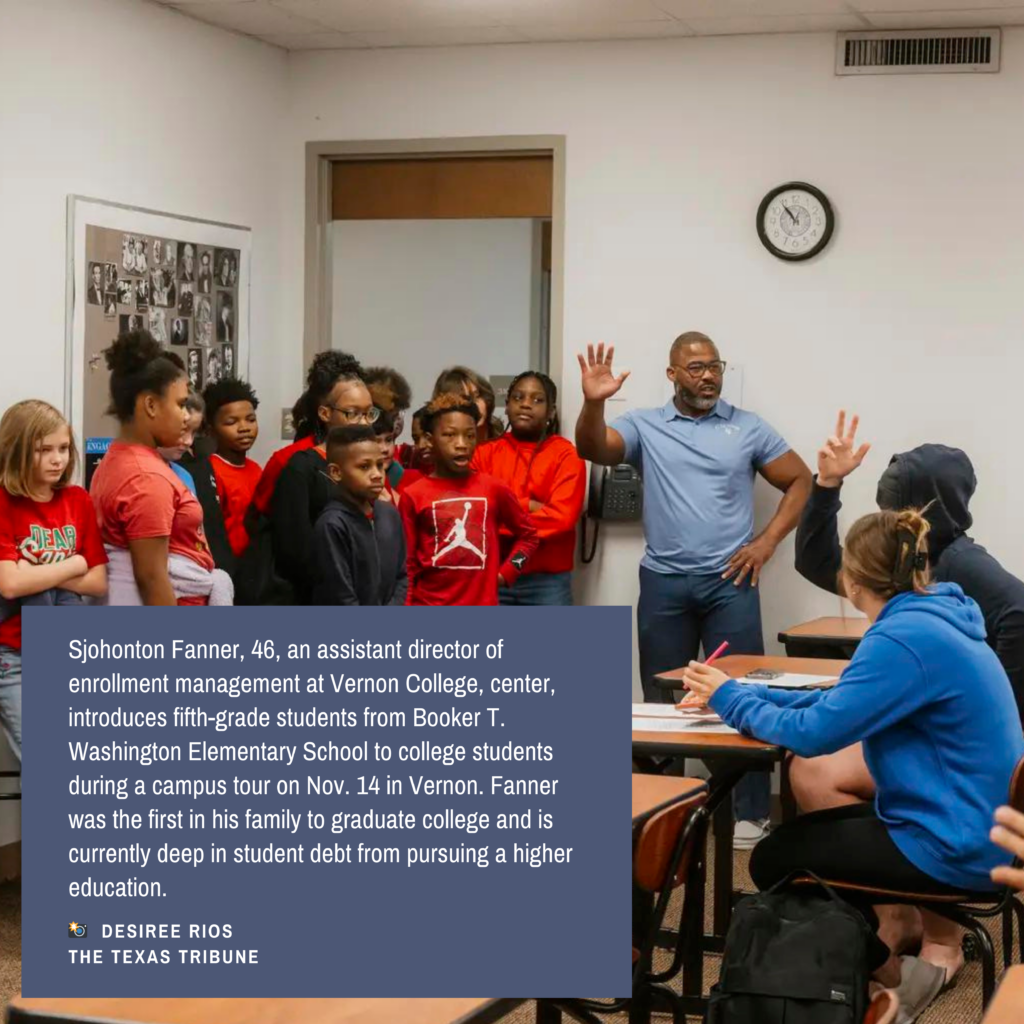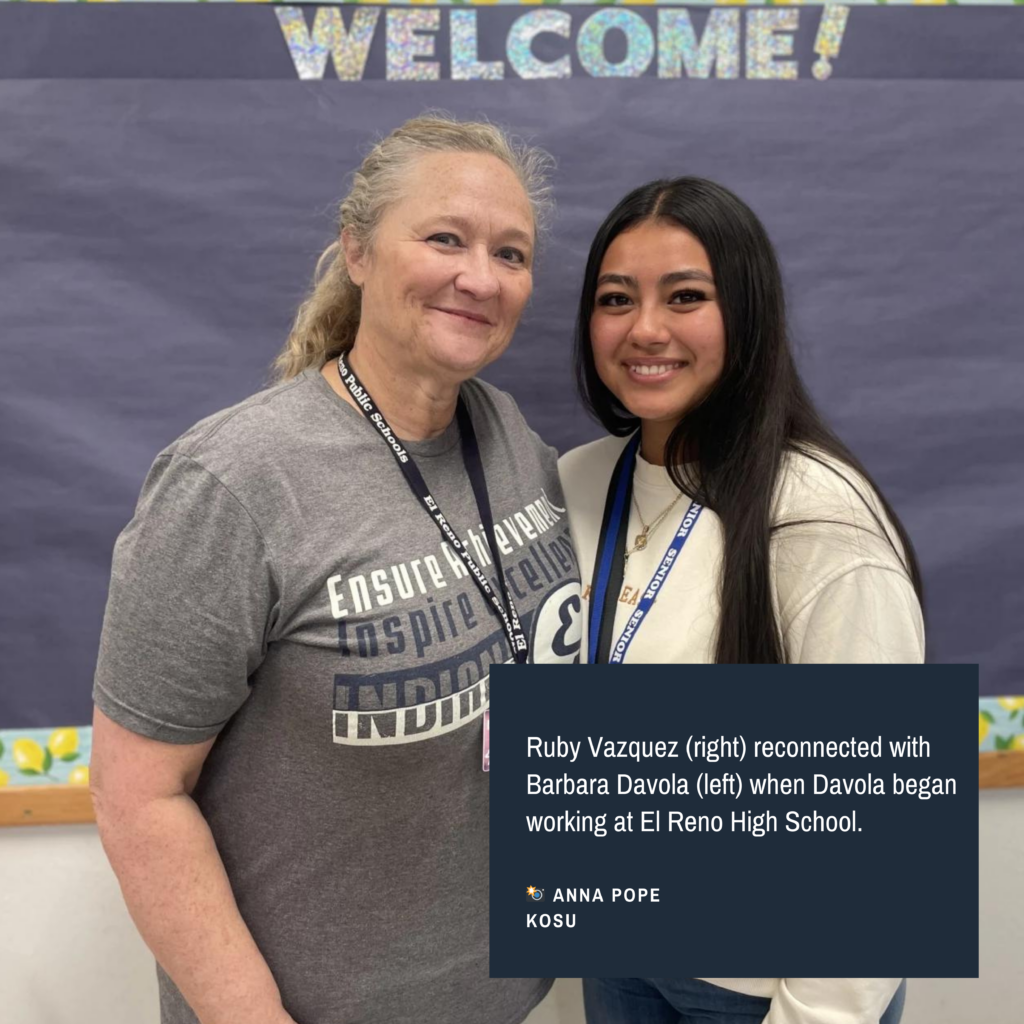‘People in rural communities want their stories told’
May 30, 2024
RNN collaboration examines the dynamics of postsecondary education options and workforce needs in rural communities
By Alana Rocha
The Rural Realities: Education, Workforce, and Progress editorial series, spearheaded by the Institute for Nonprofit News’ Rural News Network, successfully highlighted critical workforce development issues within rural communities. This 10-part series, made possible with support from Ascendium Education Group, brought together various local newsrooms to produce in-depth, multi-platform reporting, reaching wide audiences and fostering community engagement across multiple states.
From the Oklahoma panhandle to the Mississippi Delta and northern California, this six-month reporting initiative spotlighted the challenges and triumphs of rural education and workforce development, while also catalyzing new collaborations and continuing coverage on this vital beat.
On-the-ground reporting, coupled with national collaborators offering data and context, led to meaningful continuing coverage of the decisions students make in many of these often-tiny communities — choices emblematic of larger trends.
Alana Rocha, editor of INN’s Rural News Network, served as project manager. “Through data analysis, local sourcing and time spent on these campuses, the journalists on Rural Realities conveyed the nuance and complexities of higher education in rural America today and produced meaningful initial and follow-up reporting.”
Mississippi Today reporter Molly Minta detailed how the history of enslavement perpetuates favoring powerful, largely white land interests over education and jobs — and has led to Issaquena County having one of the lowest rates of educational attainment in the United States.

Community colleges tasked with shepherding Mississippi’s ambitious workforce development programs receive meager state funding, Minta learned, so they are educating students in decades-old facilities that are moldy, water-damaged and cluttered. Lawmakers, Minta wrote, acknowledged this disparity earlier this year and said they are working to fix it.
Cardinal News’ Lisa Rowan found that free tuition programs might entice students to enroll in community college, but they don’t cover gas or child care, or put food on the table. She showed, through a mother’s perspective, how the lack of child care can be a barrier for community college students and noted the state solutions afoot.
KOSU’s Anna Pope ventured to rural Oklahoma, where high schools are working to help English language learners attain higher education, which includes providing bilingual resources for students and their families to fully explore their educational options. Education leaders in the state recognize the growth of its Hispanic population and the need to increasingly invest and adapt workforce training programs to meet changing demographics.
In nearby Vernon, a rural northwest Texas town on the Oklahoma border, The Texas Tribune’s Sneha Dey got to know two women who represent the kind of students that community colleges in Texas and across the country strain to keep. In the city of Sweetwater, Dey found wind energy firms’ need for more technicians difficult to meet without state support. Despite the promise of attractive salaries, the lack of training programs and political interest to invest make it nearly impossible to find recruits.

Annelise Pierce, Shasta Scout founder and reporter, exposed how a gap in data across California related to investments in career education may contribute to workforce shortages. Coordination is in progress but, Pierce wrote, it’s not yet known how well the money being poured into such programs statewide is helping to fill labor needs for high priority fields.
Shasta County is rural, has a poverty rate above the state average, and has a relatively low number of parents who hold bachelor’s degrees. It faces obvious economic and information barriers to students’ postsecondary opportunities, Pierce reported. But the community also has another, more complex barrier: sociocultural resistance to university education. That’s one reason many educators, including Jim Cloney, the Shasta Union High School District superintendent, have decided to “honor all choices” in postsecondary achievement, including certificates, the military, two-year degrees and four-year degrees.
‘We made great inroads’
Cardinal News wanted to better understand how community colleges are reaching out to students who might otherwise be unable to attend, even with free or reduced tuition. The governor has tasked community colleges in Virginia with preparing residents for in-demand jobs, but the institutions also must contend with declining enrollment among younger students.
“We feel like we made great inroads in understanding and covering these issues, which aren’t going away anytime soon,” Megan Schnabel, managing editor at Cardinal News, shared.
The Texas Tribune’s participation in the RNN series coincided with the start of Sneha Dey’s role covering pathways from education to the workforce. Editor Alejandro Martinez-Cabrera said the collaboration helped set the tone for the Tribune’s aspirations for the role. “We’ll continue using data as a launchpad to understand how schools are or aren’t helping Texas students plot out a career after high school, with a particular emphasis on community colleges in underserved parts of the state,” he said.
Further, as a news organization focused on politics and policy, the Tribune plans to examine the barriers to postsecondary education and capture how Texans’ individual plans align with state workforce goals and school offerings.
For Minta, the Mississippi Today reporter, the project led to meeting her objective of focusing more on the intersection of higher education and economic development and increasing coverage of postsecondary education’s impact, including a lack of interest, in Mississippi’s rural communities.
“The outcome accomplished that goal by giving us two additional stories on that topic we would not have otherwise pursued,” she shared.
Pierce of Shasta Scout said she met each of her goals for the collaboration, including undertaking an important larger project than her two-person team typically has time for, increasing awareness of Shasta County’s unique rural needs and role in California, and building trust with local, state and regional sources.
In Oklahoma, public radio station KOSU aimed to go to an undercovered, rural part of the state to observe the impact of higher education, Editor Robby Korth said. And Pope, the reporter, did that by traveling to the Oklahoma Panhandle to report on how people are overcoming language barriers.
Collaboration yields short- and long-term impacts
The sources Minta spoke to told her the story was tough to read, but it was “the truth.” They hoped the coverage would lead to change in the county and help them argue for more economic development. It’s something she said she’ll be watching for in the future.

The KOSU coverage has opened up collaboration opportunities between higher education providers. It increased conversations about collaborations between Oklahoma Panhandle State University and the High Plains Technology Center. The two institutions hadn’t had a relationship, largely because of the distance between the two campuses., even though both serve students from the same geographic area.
“Creating connections between institutions was a huge success. Much like this collaboration, higher ed institutions should and can work together. Engendering those collaborations through journalism and raising awareness in a news desert is exactly the type of thing we hope to do at KOSU,” Korth reflected.
This fall, KOSU intends to check in with the students it featured.
Pierce, the Shasta Scout reporter, hopes local administrators will share her reporting with legislators and industry leaders working on a plan for California to transform career and technical education.
“I find that stories like these form an anchor for informing policy and policymakers,” Pierce shared. “The value is a slow burn, so to speak, extended over time, rather than showing up in a large number of page views early on. At least in our rural community.”

Cardinal News’ Schnabel said, “We believe that it’s important to get the word out about these programs as state and local leaders make plans for the future. We’ll be watching to see what happens in next year’s state budget session.”
Newsrooms plan to continue coverage
Each of the newsrooms left the collaboration with new sources in the postsecondary education sector and workforce development programs. Reporters and editors said they’re just getting started with producing and investigating such stories.
Mississippi Today already plans to examine college access and attainment efforts in a town in the Delta. KOSU is digging further into challenges with the Free Application for Federal Student Aid, commonly known as FAFSA, and K-12 programs preparing the future workforce.
Within the next month, Cardinal News will publish a story centered on a campus child care program several community colleges are rolling out for student parents.
Dey and her Texas Tribune editor, Martinez-Cabrera, intend to continue pursuing stories with a strong foothold on data and research that enable deep exploration of education and workforce needs in communities across the state.
Pierce said she has seen how much students in Shasta County want to help adults understand the issues they face. She plans to further explore student culture in schools.
Enjoying the benefits of wraparound support
The time and costs of traveling to rural areas were and remain a challenge for these reporting teams.
Minta said as much in a post-collaboration survey, detailing that she made multiple hours-long car trips to Issaquena County and Booneville. Korth explained that the cost of the trip to Goodwell, Oklahoma, would have exceeded his travel budget if not for RNN’s support.
The more than dozen journalists who produced Rural Realities also celebrated having Dee Hall, editor-in-chief of Floodlight, as a dedicated editor on the first half of the project.
Hall, the co-founder and former managing editor of Wisconsin Watch, offered the reporters guidance as they crafted their stories and sourcing during biweekly check-ins and edits.
“While each reporting team took its own approach, certain common themes emerged,” she said. “Two-year and technical colleges are struggling to establish or regain relevance among the communities they seek to serve. And they face skepticism about their value. Increasingly, students and their families fear the high cost of college will not be worth the training and credentials they seek.”
Hall’s leadership also gave the other editors’ more bandwidth to see the collaboration through while juggling newsroom needs.
Engaging new audiences
Rural Realities included dedicated funds to help further the reach and impact of the reporting through audience engagement. Each of the teams submitted plans unique to their stories and audiences.
Pierce decided to work with students as part of the extended engagement. They have asked her to help coordinate a panel with the Shasta County Office of Education.
Mississippi Today’s reporting shows community colleges educate more students than the state’s public universities but are expected to do so with lower tuition and a smaller share of state appropriations. The outlet is crafting a survey to learn from community college students, faculty and staff about their needs and concerns.
Cardinal News is taking a multimedia route with plans to produce a video featuring Taneisha Mathews, the mother at the center of its March story who is a community college student and studying early child care while struggling to find care for her two children.

KOSU intends to use the support to pay for continued engagement with Latinos in Oklahoma — the fastest-growing demographic and a significant piece of the state’s rural workforce. Since the collaboration was published, Oklahoma passed a law under which immigrants who are in the state without permission can be charged with the crime of “impermissible occupation.” The law has activated Oklahoma’s Latino community to speak out.
Inspired by its reporting in the last few months, the Tribune will host an event examining the realities of postsecondary education in rural communities across Texas, with a focus on barriers to access, how a new funding model is changing the way community colleges operate, and how politics can impede accomplishing the state’s workforce goals.
The Rural Realities series exceeded its goals, significantly impacting rural communities and their workforce development narratives. With support from Ascendium Education Group, the collaboration enabled extensive reporting that would have been otherwise financially and logistically challenging. This project fostered new relationships between educational institutions and enhanced the capacity of local newsrooms to tell essential stories.
Moving forward, participating newsrooms are committed to continuing their exploration of rural education and workforce issues, ensuring that these vital stories remain in the public eye. The success of this series underscores the importance of sustained support for journalism that bridges the gap between underserved rural communities and broader societal awareness and action.
The Rural Realities: Education, Workforce, and Progress editorial series was made possible with support from Ascendium Education Group and INN’s general support funders.
Appendix
Reach via Reddit, republication and search
The newsrooms all make their content free to read and republish. Each adapts their reporting to several mediums and shares it widely, including with local newspapers, radio and television stations.
KOSU produced an accompanying broadcast story for its weekly audience of about 320,000 listeners. Another version went out to partner stations and aired as part of the Oklahoma Public Media Exchange. The public media station reached an additional 25,000 people by sharing the story on its social media accounts.
For Mississippi Today, the most referrals for its first piece came from Reddit. In December, its Instagram post had its highest audience reach and engagement.
The Texas Tribune relayed that search was the major driver of traffic to its stories, resulting in thousands of first-time visitors to its website that led to new subscribers.
Among the metrics Shasta Scout reported, the regional Google Homepage featuring a follow-up report was a highlight.
The five reporting teams confirmed a majority of their sources represented diverse communities. They said the reporting could not have happened without the financial and editorial support provided through the collaboration.
Publishing Partners
Community College Research Center at Columbia University
High Plains Public Radio: KGOU, KWGS, KCCU
National Association of Student Financial Aid Administrators (NASFAA)
National Center on Safe Supportive Learning Environments
Virginia Highlands Community College
